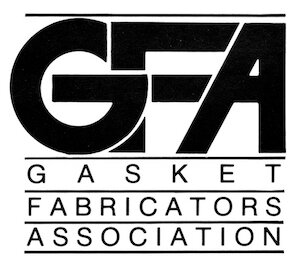Since silicone can endure up to approximately 300 °F, this material is the preferred rubber for applications requiring tolerance to extreme temperatures. Although commercial silicones are generally heat-resistant, there are silicone products that are specifically formulated to resist temperatures of 500-572 °F without sustaining deformation or other damages.
Silicone’s highly stable chemical structure makes it thermal resistant while offering a kaleidoscope of advantageous properties, including high flexibility, water resistance, electrical insulation properties, and compounds to resist mold and fungus growth. In this article, we will go over the different types of silicone rubber and the industries and applications where they are commonly used.
Types of Silicone Rubber
Silicone rubber’s flexibility is thanks to groups of organic molecules formed on a base of silicon and oxygen. It is available in various forms, each with distinctive attributes suitable for a range of applications.
Methyl Groups (MQ)
This group is known as dimethyl silicone rubber or methyl silicone rubber. Methyl groups can be substituted with other groups — including ethyl, phenyl, and vinyl — to enhance and modify their mechanical, chemical, and thermodynamic properties for different applications.
Methyl and Vinyl Groups (VMQ)
This group, known as methyl vinyl silicone rubber, is the most commonly used type. It features good compressive strength, which helps with the vulcanization industry. This type also has excellent low-temperature flexibility, high heat, and oxidative stability and is resistant to chemicals, corrosion, ozone, and sunlight.
Methyl and Phenyl Groups (PMQ)
This silicone rubber group, known as methyl-phenyl silicone rubber or phenyl silicone rubber, has an excellent low-temperature performance. The presence of phenyl enhances different properties, including high corrosion resistance, thermal stability, shear resistance, and optical conciseness. This group is used for connectors in the cable industry and sealing for automotive and aerospace applications.
Methyl, Phenyl, and Vinyl Groups (PVMQ)
The methyl groups in this compound are substituted with phenyl groups, which effectively enhances the material’s low operating temperatures. As a result, they are particularly suited to hygienic applications in the food and pharmaceutical industries.
Fluoro, Vinyl, and Methyl Groups (FVMQ)
This group is also known as fluorinated rubber or fluorosilicone rubber. They are highly chemically resistant to fuel, oil, and solvent substances. They are also typically used in sealing applications in the aerospace industry that require resistance to hot fuels, oils, and diester-based lubricants.
Uses and Applications of High Temperature Silicone Rubber
Because high temperature silicone rubber is so robust and offers the best performance of any elastomer across the extreme temperatures, , it is used in many critical applications.. Here are some of its uses and applications:
Hot Stamping
Silicone rubber sheets are extensively used in consumer product decoration, particularly hot stamps, heat seals, or heat transfer. For example, sheets are used in hot stamp decoration for full coverage and tipping applications. An example of tipping is when the foil is used to raise lettering on credit cards. Meanwhile, standard silicone sheets enable contact for applying the full image on a heat transfer mark to a part in heat transfer decoration.
Electronic Equipment
Silicone rubber is used to manufacture electrical insulating tapes, adhesives, sealants, circuit board surface coatings, varnishes, lubricants, optical fiber coatings, and other silicon-grade and silicon-source chemicals. It is also used in making keyboards, telephones, hard-coating computer housings, and other electronic equipment.
Automotive Industry
Silicone rubber sheets — resistant to heat, oil, and fuel — are molded into various durable parts for the automotive industry. These include sealants and adhesives, specialty lubricants, vibration components, and automotive polishes.
Aerospace Equipment
Silicone rubber is applied in many aspects of aircraft assembly and maintenance. Mainly, it is used in manufacturing ablatives, window seals, boots, hoses, seals and gaskets, and adhesives.
Construction Industry
Silicone rubber is used in many applications in constrcution from sealing, to protecting. Due to silicone’s excellent ability to resit the elements its the premier material for construstion sealing.
Choose ElastaPro for Your Silicone Needs!
ElastaPro was founded by industry veterans with decades of knowledge and expertise in silicone sheeting, compounding, and technology. We are fueled by our desire and deep expertise in effectively utilizing exceptional and proprietary manufacturing techniques to meet our customers’ requirements.
Contact us today to learn more about our silicone products and services!

